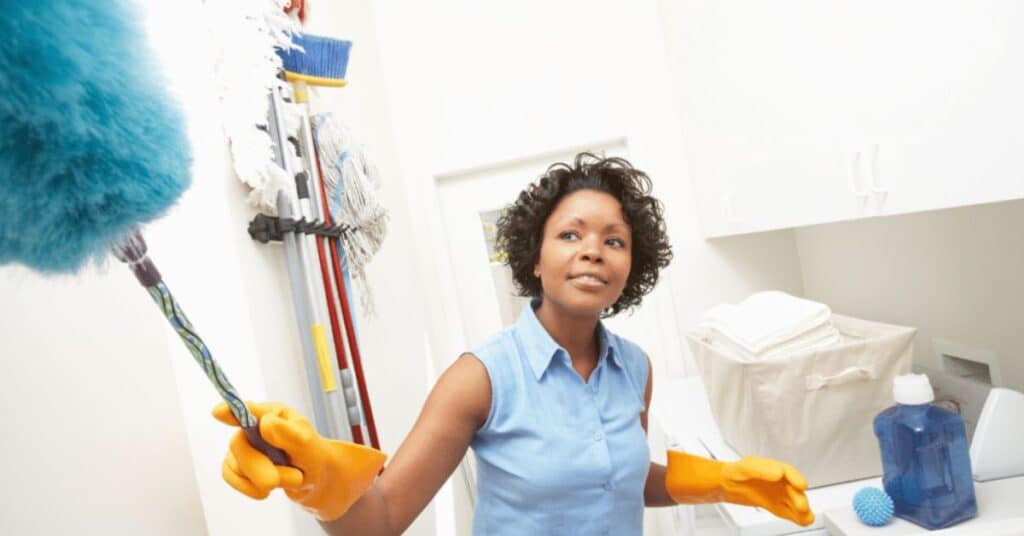Living with allergies can be challenging, especially when allergens like dust, pollen, and pet dander invade your home. Fortunately, with the right cleaning techniques and products, you can create a healthier living environment. In this blog post, we will share essential cleaning tips for allergy sufferers, incorporating the latest cleaning science, effective cleaning products, and proven cleaning secrets. Let’s dive in and discover how you can breathe easier in your own home!

Understanding Allergens
Before we delve into the cleaning tips, it’s important to understand what allergens are and how they affect you. Allergens are substances that can cause allergic reactions, such as sneezing, itching, and respiratory issues. Common household allergens include:
- Dust Mites: Tiny creatures that thrive in bedding, upholstery, and carpets.
- Pollen: Microscopic particles from plants that can enter your home through open windows and doors.
- Pet Dander: Tiny flakes of skin shed by pets, which can trigger allergies.
- Mold: Fungi that grow in damp areas like bathrooms and basements.
- Cockroach Droppings: Particles from cockroaches that can cause allergic reactions.
Cleaning Science for Allergy Relief
The science behind cleaning products and techniques plays a crucial role in reducing allergens. Here are some key points to consider:
- HEPA Filters: High-Efficiency Particulate Air (HEPA) filters are designed to trap tiny particles, including allergens. Using a vacuum cleaner with a HEPA filter can significantly reduce dust and pet dander in your home.
- Hypoallergenic Cleaning Products: Opt for cleaning products labeled as hypoallergenic. These products are formulated to minimize allergic reactions and are free from harsh chemicals and fragrances.
- Microfiber Cloths: Microfiber cloths are highly effective at trapping dust and allergens. Their tiny fibers can capture particles that traditional cloths might miss.
- Steam Cleaning: Steam cleaning uses hot steam to sanitize surfaces and kill allergens like dust mites and mold. It’s a chemical-free cleaning method that can be used on various surfaces, including floors, upholstery, and mattresses.
Cleaning Secrets for Allergy Sufferers
Now that we understand the science behind cleaning, let’s explore some cleaning secrets that can help allergy sufferers:
- Declutter Regularly: Clutter can trap dust and allergens, making it harder to clean. Keep your home organized and free from unnecessary items to reduce allergen buildup.
- Wash Bedding Weekly: Dust mites thrive in bedding, so it’s essential to wash sheets, pillowcases, and blankets in hot water (at least 130°F) every week to kill dust mites.
- Use Allergen-Proof Covers: Invest in allergen-proof covers for mattresses and pillows. These covers create a barrier that prevents dust mites from penetrating your bedding.
- Keep Windows Closed: During high pollen seasons, keep windows and doors closed to prevent pollen from entering your home. Use air conditioning to maintain a comfortable indoor temperature.
- Control Humidity: Mold thrives in damp environments, so it’s important to control humidity levels in your home. Use a dehumidifier to keep humidity levels below 50%.
- Vacuum Regularly: Vacuum carpets, rugs, and upholstery at least twice a week using a vacuum cleaner with a HEPA filter. This will help remove dust, pet dander, and other allergens.
- Dust with Damp Cloths: Instead of dry dusting, use a damp microfiber cloth to wipe surfaces. This prevents dust from becoming airborne and resettling on other surfaces.
- Clean Air Vents and Filters: Regularly clean air vents and replace air filters in your HVAC system. This helps maintain good indoor air quality and reduces the circulation of allergens.
- Use Natural Cleaning Products: Avoid cleaning products with strong fragrances and harsh chemicals. Opt for natural cleaning products that are gentle on your respiratory system.
- Shower Before Bed: If you’ve been outside, shower before bed to remove pollen and other allergens from your skin and hair. This prevents allergens from transferring to your bedding.
Effective Cleaning Techniques
In addition to the cleaning secrets mentioned above, here are some effective cleaning techniques that can help allergy sufferers:
- Top-to-Bottom Cleaning: When cleaning a room, start from the top and work your way down. This ensures that dust and allergens fall to the floor, where they can be vacuumed up.
- The Two-Bucket Method: When mopping floors, use two buckets—one for clean water and one for dirty water. This prevents spreading dirt and allergens around and ensures a cleaner result.
- The Power of Elbow Grease: Sometimes, a little extra scrubbing is needed to remove stubborn allergens. Use a scrub brush or sponge to apply more pressure and get rid of tough dirt.
- The 15-Minute Rule: Set a timer for 15 minutes and focus on cleaning one area. This technique helps you stay focused and motivated, making cleaning feel more manageable.
- The Art of Dusting: When dusting, start with higher surfaces and work your way down. Use a microfiber cloth or a duster to trap dust instead of spreading it around.
- The Magic of Soaking: For tough-to-clean items like oven racks or showerheads, soak them in a mixture of warm water and cleaning solution. This will help loosen dirt and make cleaning easier.
- The Power of Steam Cleaning: Steam cleaners are not only great for floors but also for sanitizing upholstery, curtains, and even mattresses. Use the appropriate attachment and follow the manufacturer’s instructions.
- The Importance of Regular Maintenance: Regular cleaning and maintenance can prevent the buildup of allergens. Create a cleaning schedule and stick to it to keep your home consistently clean.
- The Art of Stain Removal: Different stains require different techniques. Research and learn specific stain removal methods for common stains like wine, ink, or grease to achieve the best results.
- The Power of Teamwork: Cleaning doesn’t have to be a solo task. Get your family involved and make it a fun activity. Assign tasks to each family member and work together to achieve a cleaner home.
Conclusion
By understanding the science behind cleaning products and implementing these cleaning secrets and techniques, you can create a healthier living environment for allergy sufferers. Remember, consistency and attention to detail are key. So, put on your cleaning gloves, grab your favorite products, and let’s make your home a sanctuary free from allergens! For professional cleaning services, contact Cowtown Maids. We are experts in cleaning science and can help you achieve a spotless and allergen-free home.
About The Author
Cowtown Maids is a professional cleaning service located in Fort Worth TX. They offer a variety of cleaning services to meet most residential cleaning needs, including recurring maid services, deep house cleaning services, and move-in/out cleaning services. If you live in the Fort Worth area, we invite you to request a free home cleaning quote.
Quote Form
"*" indicates required fields
← Next Blog Post: The Most Overlooked Spots When Cleaning and How to Tackle Them
